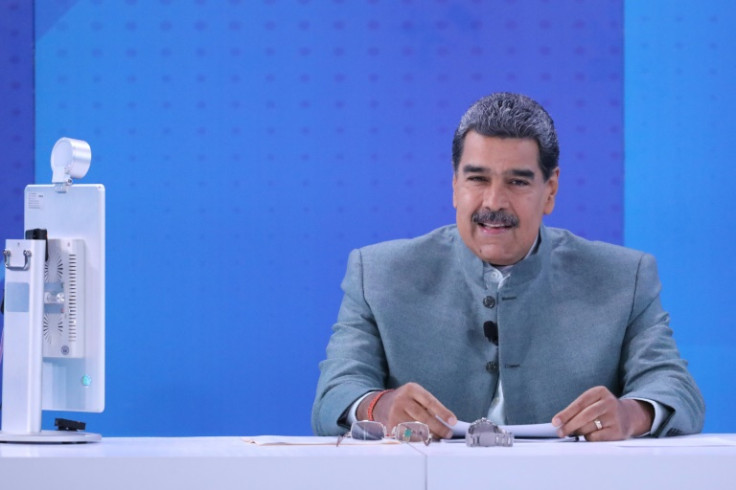Maduro Vows To Bar ExxonMobil From Guyanese Region Claimed By Venezuela

Venezuelan President Nicolas Maduro has vowed to bar US petroleum giant ExxonMobil from the waters off the oil-rich region of Essequibo, which Caracas claims from Guyana as its own.
The head of ExxonMobil in Guyana, Alistair Routledge, revealed plans this month for two exploratory wells off the coast of Essequibo, saying the company wanted to develop new sites in an area where there was no existing infrastructure.
"ExxonMobil is not entering this sea... they should know that," Maduro said in televised remarks on Monday.
Caracas has long claimed the Essequibo region -- which makes up about two-thirds of Guyana's territory -- but has amped up its rhetoric since its neighbor began issuing licenses for oil companies to operate there.
Just after plans for the new wells were announced, Venezuelan Defense Minister Vladimir Padrino wrote on X, formerly Twitter, that ExxonMobil would "receive a proportional, forceful response" if drilling began.
Exxon discovered the crude reserves off Guyana in 2015 and already operates the Stabroek block nearby.
Essequibo has been administered by Guyana for more than a century, but in December Maduro called a controversial non-binding referendum that overwhelmingly approved the creation of a Venezuelan province in the region, sparking fears of military conflict.
Both countries pledged last year not to use force to settle the dispute -- which is currently before the International Court of Justice in The Hague -- but Guyana has expressed concern over a Venezuelan military build-up near the border.
"There are some inconsistencies between Venezuela's diplomatic and military posture," Guyana Foreign Minister Hugh Todd told AFP this month.
His comments were prompted by a report from the Washington-based Center for Strategic and International Studies, which included satellite images showing the movement of troops and military assets closer to the two countries' shared frontier.
© Copyright AFP {{Year}}. All rights reserved.




















